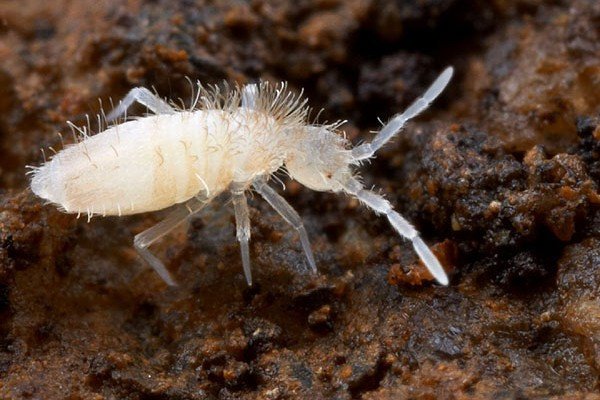Springtails — Class Collembola
These minute animals are primitive looking, with soft, rounded bodies and short, plump antennae. They are called springtails because many have a lever-like tail that is held on the underside of the abdomen in a special fold. When released, its spring action makes these animals jump! Many scientists combine this group with the insects, as their three body segments and six legs indicate a close connection.
Springtails are found from pole to pole, and are extremely common in most places throughout the world. They can occur in abundances of up to several million individuals per m2. Most species spend their lives embedded in soil or decaying vegetation, consuming tiny organic particles such as root hairs or fungi. So far, 85 species of collembolans have been named from the Canadian Arctic, about 40 of which occur in the High Arctic. Some of these species have extremely wide ranges – Megalothorax minimus can be found on every continent, from the Arctic to the Antarctic! The appearance of these species varies with their habitat preference. Springtails that live deep in the soil are pale in colour, move slowly, and are blind. By contrast, those that live on the soil surface are generally darker in colour, possess well developed sense organs, and are superb jumpers. A human can jump 2 m from a standing start, while a kangaroo might cover 10 m. If a springtail were the same size and retained its jumping prowess, it could cover nearly 200 m!
Springtails can reproduce quickly when conditions are favourable, but can also lie dormant beneath frozen soil in winter. They also enter a special state called diapause, which allows them to withstand all manners of extreme conditions for up to 18 months! This amazing resilience is one factor that has allowed springtails to successfully colonize the Arctic. Protaphorura arctica does not even freeze at temperatures as low as -30 °C! It accomplishes this extraordinary feat by reducing its water content by 90%. On occasion, springtails leave their subterranean haunts, moving to the surface in huge numbers, even when the ground is snow covered! With an incredible ability to remain active in the cold, some springtails can jump around when it is as low as -5 °C, earning them the name snow fleas.

